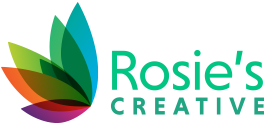
Hot Tips for Making Web Copy Scannable
 Industry Insider Tips for Writing Web Content
Industry Insider Tips for Writing Web Content
Looking to make a killer first impression in today’s fast-paced online marketplace? Every aspect of your web presence has got to be on point – and key to this effort is making sure that your website’s written content is fine-tuned for maximum effectiveness.
Writing for the web is different from writing for other media, though, and understanding how to write effectively for the web begins with understanding how people read on the web. Decades of research have shown that, rather than reading word by word, web users scan pages for vital info before moving on – sometimes in mere seconds. So, to reach potential customers on the web today, making page copy brisk and “scannable” is a must.
Jakob Nielsen, co-founder of the Nielsen Norman Group and a world-renowned “usability guru,” identifies three critical factors affecting the user-friendliness of web content. Let’s take a quick look at these three distinct, yet overlapping concepts that have a big impact on the all-important “scannability” of web copy…
Legibility
The most basic factor affecting usability, legibility describes the ease with which users can distinguish the sentences, words, even the individual characters making up your text. Legibility isn’t about the tone, voice, complexity, or even the substance of your content – at the simplest level, it’s about whether people can actually read it.
Readability
Next up is readability, or the measure of how accessible your content is to the average reader. Readability is focused on structure and language, and it’s typically expressed in terms of a reading grade level. A skilled copywriter will always be mindful of the target audience and keep readability first and foremost.
Comprehension
Finally, there’s comprehension, the assessment of just how easy your content is to follow. Simply put, can readers understand your meaning? Identify major points and key takeaways? Can they draw the intended conclusions from your text – and if your goal is to persuade, is your call-to-action clear and unambiguous?
Pulling off user-friendly, “scannable” page copy that addresses all three of these factors requires not just a solid grasp on copywriting fundamentals, but a handle on basic principles of design and user experience, too. With this in mind, let’s go over a few best practices for writing on the web today…
Inverted Pyramid: Take a page from old-school print journalism by using the “inverted pyramid” style of writing – frontload key information, then follow up with background and supporting details.
Short & Sweet: Reinforce readability with short, simple sentences, and stick to unassuming, broadly accessible language.
Easy to Follow: Make content easier to follow by using plenty of descriptive headers and sub headers, and break up blocks of text by organizing key points into numbered or bulleted lists.
Easy to Read: Be mindful of how legibility is affected by design choices like typeface selection, line and letter spacing, and the amount of contrast between text and background elements.
Use Visual Aids: Use visual aids like illustrations, charts, or infographics to communicate key concepts when possible.
Is your website’s written content in need of an overhaul? Rosie’s Creative can help. Our team of creative professionals is well-equipped to balance great copywriting and purposeful, user-focused design to help you project a modern, confident image and turn curious site visitors into loyal customers.
Want to learn more? Contact us today – and remember, with Rosie’s Creative, your first consultation is always free!
